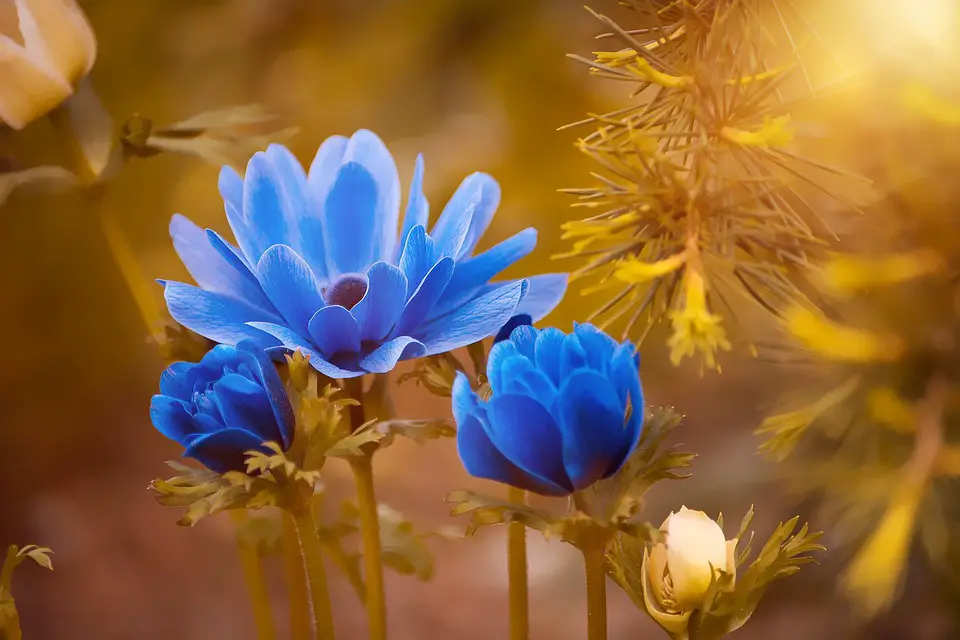Looking to add a touch of natural beauty to your home decor? Why not consider growing your own cut flowers? Not only will you have access to fresh, colorful blooms throughout the year, but you’ll also save money on store-bought bouquets. In this blog post, we’ll explore the world of cut flower gardening and provide you with tips on how to create stunning bouquets for every occasion.
The Basics of Cut Flower Gardening
When it comes to cut flower gardening, there are a few key factors to consider. First and foremost, you’ll need to select the right plants for your climate and growing conditions. Some popular options for cut flowers include roses, peonies, sunflowers, and zinnias. It’s also important to choose a sunny location for your flower garden, as most flowering plants require at least six hours of sunlight per day.
Choosing the Right Varieties
When selecting flowers for your garden, it’s essential to choose varieties that are well-suited for cutting. Look for plants with long, sturdy stems and blooms that last well in a vase. Some great options to consider include dahlias, lilies, and carnations.
Preparing Your Garden
Before planting your cut flower garden, be sure to prepare the soil properly. Most flowering plants prefer well-draining soil that is rich in organic matter. Consider adding compost or fertilizer to improve soil fertility and structure.
Caring for Your Cut Flowers
Once your garden is established, it’s essential to care for your cut flowers properly to ensure they bloom beautifully. Regular watering, pruning, and fertilizing are key to keeping your plants healthy and productive. Additionally, be sure to keep an eye out for pests and diseases that can damage your flowers.
Harvesting Your Blooms
When it comes time to harvest your flowers, there are a few key tips to keep in mind. For the best results, cut flowers early in the morning when they are at their freshest. Use sharp scissors or pruning shears to make clean cuts, and place your blooms in a bucket of water immediately to prevent wilting.
Creating Stunning Bouquets
Now comes the fun part – creating beautiful bouquets with your freshly harvested blooms. When arranging your flowers, consider color, texture, and shape to create visually appealing arrangements. Don’t be afraid to mix and match different types of flowers to add interest and depth to your bouquets.
Key Takeaways
| Key Takeaways |
|---|
| Choose the right varieties of flowers for cutting |
| Prepare your garden with well-draining soil and proper nutrients |
| Care for your plants with regular watering, pruning, and fertilizing |
| Harvest your flowers early in the morning for the best results |
| Create stunning bouquets by combining different types of flowers |
Frequently Asked Questions
1. Which flowers are best for cutting?
Popular options for cut flowers include roses, peonies, sunflowers, and zinnias.
2. How do I prepare my garden for cut flower gardening?
Ensure you have well-draining soil that is rich in organic matter, and consider adding compost or fertilizer.
3. How often should I water my cut flowers?
Water your plants regularly, especially during hot and dry periods.
4. How do I prevent pests and diseases in my cut flower garden?
Monitor your plants regularly for signs of pests or diseases, and take action promptly if you notice any issues.
5. Can I grow cut flowers indoors?
While some flowers can be grown indoors, most flowering plants prefer outdoor conditions with plenty of sunlight.
6. Do I need to deadhead my cut flowers?
Deadheading, or removing spent blooms, can help encourage further flower production in some plants.
7. How long do cut flowers typically last in a vase?
The lifespan of cut flowers can vary depending on the type of flower and how well they are cared for, but most blooms will last at least a few days.
8. Can I use any type of vase for my cut flower bouquets?
While any vase will do, consider using a vase with a narrow neck to help support the stems and prevent them from splaying out.
9. Are there any special techniques for arranging cut flower bouquets?
Experiment with different arrangements and consider using floral foam or tape to help secure your stems in place.
10. What are some common mistakes to avoid when growing cut flowers?
Avoid overwatering, overcrowding your plants, and neglecting regular maintenance tasks like pruning and fertilizing.
In conclusion, cut flower gardening is a rewarding and enjoyable hobby that allows you to bring the beauty of nature indoors. By choosing the right varieties, preparing your garden properly, and caring for your plants diligently, you can create stunning bouquets for every occasion. Remember to harvest your blooms early in the morning, and don’t be afraid to get creative with your arrangements. With a little time and effort, you’ll soon be enjoying a bountiful harvest of fresh, beautiful flowers straight from your garden.
